Headlines and events archive
Displaying 251 - 300 of 1956
You may also find an archive of news published in the media which are related with the Instituto de Astrofísica de Andalucía - CSIC.
Pages

|
23/02/2023 - 12:30
ALMA: Planned Sensitivity Upgrades, and Molecular Gas Imaging of a z=0.376 HI-Detected Galaxy This talk will cover two distinct topics in progress, one programmatic and the other science: I will first discuss the ALMA Wideband Sensitivity Upgrade (WSU), and then I'll talk about ALMA followup of the highest redshift HI detection in the COSMOS HI Large Extragalactic Survey (CHILES) made with the first 178 hours of observing. With regard to the WSU, the ALMA Project is embarking on a partner-wide initiative to at least double, and... Dr. Jennifer Donovan Meyer |
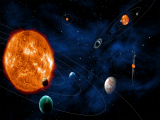
|
30/03/2023 - 12:30
Preparation and Asteroseismic exploitation of the PLATO Mission Thanks to ultra-precise space missions, we are living an era of big scientific discoveries in the stellar and planetary physics fields. PLATO will capitalise on the developments of successful past missions such as CoRoT, Kepler/K2, TESS and CHEOPS that studied stars and their planetary systems. PLATO will detect and characterise terrestrial exoplanets at orbits up to the habitable zone of solar-type stars. Transit measurements and... Dr. Javier Pascual |
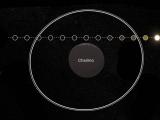
|
25/01/2023
James Webb telescope observes the rings of Chariklo with a high-precision occultation technique The Institute of Astrophysics of Andalusia (IAA-CSIC) is leading an observation campaign with the JWST to capture the shadows of starlight produced by the thin rings of the object, located beyond Saturn. Subsequent observations revealed that crystalline water ice dominates the spectrum of Chariklo and its rings, suggesting that continuous micro-collisions are taking place there |

|
30/01/2023 - 12:30
SO Coloquio: Dirty Dancing: piercing the dusty environment of merging supermassive black holes It is a posit of modern astrophysics that most massive galaxies host a super- massive black hole (millions to billions of times more massive than the Sun). These black holes affect the evolution of galaxies well beyond their gravitational sphere of influence (which does not extend wider than 1/1000th of the typical galaxy linear size). In turn, the evolution of galaxies affects the growth of black holes through, e.g., galaxy merging.... Matteo Guainazzi |
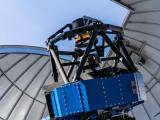
|
09/01/2023
The IAA-CSIC participates in two of the new surveys of the JAST80 telescope of the Javalambre Astronomical Observatory The last phases of stars and the formation and evolution of massive stars will be the objects of study of these new legacy projects |
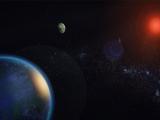
|
15/12/2022
ESPRESSO and CARMENES discover two exo-Earths in the habitable zone of a star close to the Sun The Institute of Astrophysics of Andalusia (IAA-CSIC) participates in the discovery of a multiple planetary system around GJ1002 |
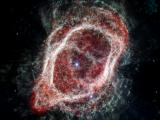
|
14/12/2022
The James Webb Telescope reveals that four to five stars were involved in the formation of the Southern Ring nebula The Institute of Astrophysics of Andalusia (IAA-CSIC) participates in a study that points to the interaction of a multiple star system in the formation of the nebula, which was featured on the cover of the journal Nature Astronomy |
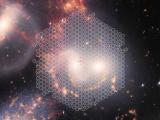
|
13/12/2022
WEAVE first light The Institute of Astrophysics of Andalusia (IAA-CSIC) participates in the WEAVE scientific team, whose first observations already show the high quality of the data that the spectrograph will provide |
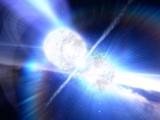
|
07/12/2022
A stellar collision that shone for almost a minute complicates the stellar explosion scenario The Institute of Astrophysics of Andalusia (IAA-CSIC) participates in the study of a gamma-ray burst (GRB) whose characteristics require a revision of the theoretical framework that explains these bursts |
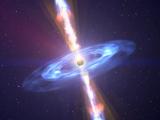
|
30/11/2022
Detected a jet of matter emerging from a supermassive black hole as it devours a star The Institute of Astrophysics of Andalusia (IAA-CSIC) participates in two articles that analyse this very rarely observed phenomenon |

|
02/11/2022 - 04/11/2022
https://home.iaa.csic.es/fundcosmo22/ Granada |

|
18/10/2022 - 21/10/2022
https://www.granadacongresos.com/severoochoa Granada |

|
09/09/2022 - 11/09/2022
https://iota-es.de/esop41/index.php Granada |
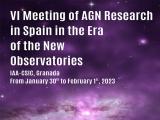
|
30/01/2023 - 01/02/2023
https://www.granadacongresos.com/agn2023 Granada |
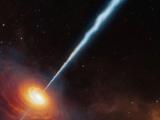
|
23/11/2022
Determined how particle acceleration occurs in the jets of a supermassive black hole The Institute of Astrophysics of Andalusia (IAA-CSIC) participates in a study that suggests that shock waves could be at the origin of the acceleration of particles in the jets |

|
12/01/2023 - 12:30
CARMENES-PLUS: a technical upgrade for CARMENES and the impact on its science CARMENES is a dual (VIS: 550 to 950 nm; NIR: 950 to 1700 nm) high-resolution spectrograph installed at the 3.5 m telescope at the Calar Alto Observatory (CAHA, Almería, Spain). The NIR channel spectrograph uses the radial-velocity method for detecting exoplanets around low-mass stars. Thus, a high thermal stability is required in the NIR cooling system to achieve a high precision in radial velocities. The cooling system was originally conceived... Roberto Varas González |

|
25/05/2023 - 12:30
SO colloquio: To be black, or not? Observational tests of strong field gravity are improving rapidly. This allows us to test whether the compact objects observed in the sky are truly black holes as described in general relativity or some other "exotic" objects. These tests, however, require exquisite theoretical modeling of black holes as well as their alternatives. This talk will discuss two such examples: the impact of the astrophysical environment on black holes and the... Dr. Béatrice Bonga |
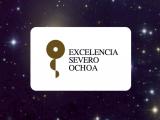
|
08/11/2022
The Institute of Astrophysics of Andalusia (IAA-CSIC) has been awarded the Severo Ochoa Centre of Excellence distinction for the second time The distinction, which provides centres with one million euros per year for four years, aims to finance and accredit institutions that demonstrate impact and leadership at an international level |
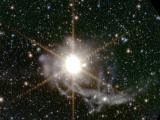
|
03/11/2022
The IAA-CSIC participates in ARRAKIHS, the European Space Agency's mission to study dark matter This is the first mission of the ESA Scientific Program coordinated by Spain. The IAA-CSIC will carry out the coordination of the observational strategy of the mission |
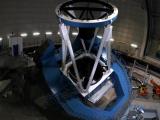
|
26/10/2022
The construction of TARSIS, the next generation instrument for the Calar Alto 3.5-metre telescope, has started TARSIS has unique features, in particular its ability to detect light in the near ultraviolet and its unprecedented field of view |

|
24/11/2022 - 12:30
SO webloquio: The Milky Way Nuclear Star Cluster The Milky Way nuclear star cluster (NSC) is located within the nuclear stellar disc (NSD) in the Galactic centre. The NSC and NSD are distinct structures of the Milky Way, but also connected to the larger Milky Way structures, e.g. via the inflow and outflow of gas, and the infall of star clusters. Our knowledge of the larger Milky Way structures, Galactic disc, bulge and halo, has expanded in recent years through surveys and dedicated missions... Dr. Anja Feldmeier |

|
07/11/2022 - 12:30
The ASTRI Mini-Array and its Science The ASTRI Collaboration is building at the Teide Astronomical Observatory in Tenerife an array of 9 small Cherenkov telescopes capable of observing with good flux sensitivity, energy and angular resolution the gamma-ray sky above an energy threshold of several hundreds of GeV. The ASTRI telescopes adopt a dual-mirror Schwarzschild-Couder optical design. Entrapped amidst the two mirrors the ASTRI camera, based on silicon photon-multipliers... Dr. Giacomo Bonnoli |

|
29/11/2022 - 12:30
TARSIS: the Tetra-Armed IFU at Calar Alto designed for the CATARSIS galaxy cluster exploration In this talk I will present the design of the Integral Field Unit TARSIS, recently selected to be the next generation multi-object spectrograph for the 3.5m telescope at Calar Alto. In addition, I will describe the scientific goals of CATARSIS, the galaxy cluster exploration that will be carried out in the first years of the operation of TARSIS. Dr. Jorge Iglesias |

|
15/11/2022 - 12:30
The effect of pre-processing on the stellar population content of early-type dwarf galaxies According to the CDM model, galaxy clusters grow through the accretion of individual galaxies and galaxy groups. Thus, it is a true challenge to distinguish the possible role of the present-day host halo from that of previous ones, in the transformation of accreted galaxies. Dwarf early-type galaxies (dEs) are often regarded as statistically meaningful testbeds for investigating environmental effects mainly due to their high number density and... Dr. Bahar Bidaran |
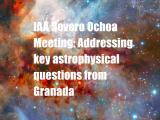
|
13/10/2022
IAA Severo Ochoa Meeting: Addressing Key Astrophysical Questions from Granada The Institute of Astrophysics of Andalusia (IAA-CSIC) organizes a meeting with specialists from all over the world on the most current problems in astrophysics |
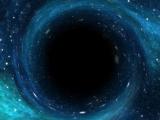
|
10/10/2022
Study points to the existence of stars as compact as black holes The Institute of Astrophysics of Andalusia (IAA-CSIC) is leading a theoretical study that shows that some of the objects classified as black holes could actually be ultra-compact stars |

|
06/10/2022
The astronomy of the future will be collaborative, multi-wave, more diverse and green The Institute of Astrophysics of Andalusia (IAA-CSIC) hosted yesterday a round table with the heads of three of the largest astronomical infrastructures on Earth: the Cherenkov Telescope Array Observatory (CTAO), the Extremely Large Telescope (ELT) and the Square Kilometre Array Observatory (SKAO). The nature of these facilities, which will open new windows on the cosmos in gamma-ray, optical and near-infrared and radio astronomy, involves... |
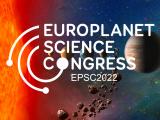
|
20/09/2022
The largest European meeting on planetary sciences is held in Granada More than a thousand specialists participate in the congress, organized locally by members of the Institute of Astrophysics of Andalusia (IAA-CSIC) and held at the Palacio de Congresos. This great meeting has allowed the organization, at the IAA-CSIC, of a meeting with representatives of the European and American space agencies (ESA and NASA) on the JUICE (ESA) and Clipper (NASA) space missions |
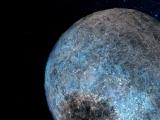
|
08/09/2022
Study reveals that water worlds may be more common than expected The Institute of Astrophysics of Andalusia (IAA-CSIC) leads a study that finds evidence for the existence of abundant extrasolar planets composed of ice and rock around dwarf stars |
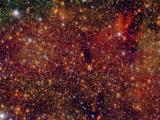
|
25/08/2022
First look at the prolific stellar factory at the center of the Milky Way A study, part of the GALACTICNUCLEUS project, coordinated by the Institute of Astrophysics of Andalusia (IAA-CSIC), reveals the history of star formation in the center of our galaxy |

|
19/12/2022 - 12:30
Fossil groups of galaxies: seeing the future looking at the past The nature of fossil groups of galaxies has been debated for over more than 3 decades. This is in part because of the lack of deep multiwavelength data and also due to the low purity of samples selected using solely magnitude gap criteria. The initial results of a sample of bonafide fossil groups using X-ray/optical observations has clarified many of their characteristics, such as high central metal abundances and concentration measurements.... Dr. Renato Dupke |

|
01/12/2022 - 12:30
SO Colloquio: Moving from high to extreme precision in air shower observations: From LOFAR to SKAO Cosmic rays play an interesting role in understanding the most violent objects in the universe. These charged atomic particles reach energies orders of magnitudes higher than achievable in accelerators on Earth, which points towards an origin of the most extreme objects in the universe, with strong magnetic shocks and mass transfer. However, these sources are not firmly identified. Astrophysical interpretations are currently limited by the... Dr. Anna Nelles |

|
17/11/2022 - 12:30
SO colloquio: A conclusive test of the cold dark matter model The ``Lambda cold dark matter'' (LCDM) cosmological model is one of the great achievements in Physics of the past thirty years. Theoretical predictions formulated in the 1980s turned out to agree remarkably well with measurements, performed decades later, of the galaxy distribution and the temperature structure of the cosmic microwave background radiation. Yet, these successes do not inform us directly about the nature of the dark matter. This... Dr. Carlos Frenk |

|
08/11/2022 - 12:30
The many “phases” of small bodies Asteroids, comets, and trans-Neptunian objects are collectively known as small bodies. In a way, they are the debris left by the planetary formation in the Solar system, and as such, they carry a lot of information regarding the processes that shaped it. But, small bodies are by no means stationary objects: not only do they move across the sky, but their brightness also changes due to different mechanisms, from rotational variations due to... Dr. Álvaro Alvarez-Candal |

|
25/10/2022 - 12:30
SO Colloquio: Galactic Center: Radiation from black hole candidates and the dynamics of high velocity stars We summarize recent research results on the radiation mechanism of the Super Massive Black Hole (SMBH) candidate SgrA* and ask the question if there are Intermediate Mass Black Hole (IMBH) candidates in the central stellar cluster. Furthermore we give an update on the most recent high velocity stars in the central arcsecond - that are closest to SgrA*. Here we concentrate on the high velocity star cluster dynamics and on the 4711+ stars with... Prof. Andreas Eckart |

|
26/09/2022 - 12:30
The EnVision mission to Venus: Discovering why our closest neighbour is so different EnVision was selected as ESA’s 5th Medium-class mission in the Agency’s Cosmic Vision plan, targeting a launch in the early 2030s. The mission is a partnership between ESA and NASA. The primary goal is to provide a holistic view of Venus, from its inner core up to its upper atmosphere by a single mission, and will be the first mission of its kind. More specifically, EnVision will characterise Venus’ core and mantle structure, in order to study... Dr. Anne Grete Straume |

|
13/09/2022 - 12:30
SO Colloquio: Studies on the origins of our solar system My goal in this colloquium is to apprehend globally the Solar System by describing a vast sample of small bodies, from Near Earth Asteroids to remote Trans-Neptunian Objects. This goes beyond projects that focused on certain populations only. The core of the talk is theoretical, with emphasis on inner structures and rings. Meanwhile, the stellar occultations by these objects will provide an exploratory route to characterize objects with widely... Dr. Bruno Sicardy |

|
07/07/2022
Possible galactic fossil found near Andromeda An unusual ultrafaint dwarf galaxy has been discovered, within the framework of a project led by the Institute of Astrophysics of Andalusia (IAA-CSIC), in the outer limits of the Andromeda galaxy. Named Pegasus V, it contains very few heavy elements and is likely to be a fossil of the earliest galaxies |
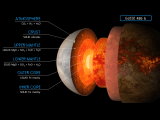
|
21/06/2022
The best studied terrestrial planet outside the Solar System An international scientific team, with the participation of the Instituto de Astrofísica de Andalucía (IAA-CSIC), has measured with unprecedented precision the mass and radius of Gliese 486 b, a "super-Earth" type exoplanet, discovered in 2021 with the CARMENES instrument at Calar Alto observatory. |
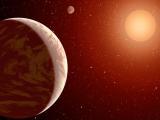
|
15/06/2022
Two hot, rocky exoplanets detected transiting a nearby star An international team led by the Instituto de Astrofísica de Andalucía (IAA-CSIC) has detected two telluric planets orbiting the nearby star HD 260655. |
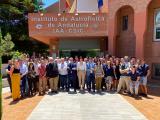
|
10/06/2022
Diana Morant visits the Institute of Astrophysics of Andalusia The Minister of Science and Innovation has highlighted the contribution of her research staff in capturing the first historic image of the black hole at the centre of the galaxy |

|
06/10/2022 - 12:30
Computational Intelligence in the Big Data Context Computational Intelligence (CI) commonly refers to a variety of bio-inspired and/or human-like techniques that can be applied in optimisation, learning and modelling problems. Broadly speaking, CI comprises Artificial Neural Networks, Fuzzy Sets and Fuzzy Logic and Evolutionary Computation. In the era of big data, CI in conjunction with data mining techniques are expected to help uncover useful knowledge from big data as they are very well... Dr. Isaac Triguero |

|
13/10/2022 - 12:30
New developments at the IAA cosmic dust laboratory The interpretation of astronomical observations of comets and asteroids and of extrasolar objects such as protoplanetary and debris disks is crucial for understanding the origin and evolution of planetary systems. Collecting electromagnetic radiation scattered or emitted by dust particles present in these objects with powerful telescopes is often our only way to observe and characterized them. In situ observations are available for a handful of... Dr. Juan Carlos Gómez |

|
06/06/2022
Lourdes Verdes-Montenegro, researcher at IAA-CSIC, wins the Ada Byron Award from the University of Deusto The Ada Byron Award, with editions in six countries, was created by the Faculty of Engineering to acknowledge the work of women in technology and encourage women in STEM. |
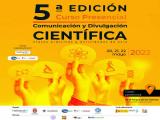
|
20/05/2022 - 22/05/2022
COURSE ON DISSEMINATION TECHNIQUES. RECREATIONAL AND TRAINING DAYS "Practical classes and leisure activities". Granada |

|
13/06/2024 - 12:30
SO colloquium: The magnetised intergalactic medium revealed by SKA Pathfinders Using broadband radio polarimetry we can probe regions of diffuse ionised and magnetised gas that are challenging to detect by other means, such as in the halos of galaxies (CGM), in galaxy groups and clusters (IGrM/ICM), and filaments of the cosmic web (ie. WHIM). Here I will highlight recent results from the LOFAR and ASKAP radio telescopes,which use the effect of Faraday rotation to illuminate the CGM, IGrM, ICM and WHIM gas. In particular, I... Dr. Shane O'Sullivan |

|
10/11/2022 - 12:30
SO Colloquio: The Cherenkov Telescope Array: Status and Prospects The Cherenkov Telescope Array (CTA) will become the reference observatory for Very High Energy (VHE) Gamma Ray Astronomy during the next decades. CTA promises a jump in sensitivity and energy coverage of one order of magnitude over the current instruments, significantly improved energy and angular resolutions and full sky coverage. Over thousand new sources will foreseeably be identified in this range for the first time. VHE gamma rays are... Dr. Juan Cortina |
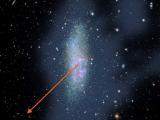
|
25/05/2022
An isolated dwarf galaxy, unexpectedly affected by its environment The finding, with the participation of the IAA-CSIC, forces a change in the conception of isolated galaxies |
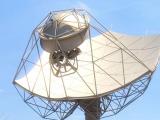
|
25/05/2022
The Ministry of Science and Innovation has earmarked 2.5 million euros for the international Square Kilometre Array radiotelescope The Square Kilometre Array (SKA) will enable progress to be made in the search for signs of life in the galaxy and in the observation of pulsars, black holes and gravitational waves. The technical coordination of the Spanish participation in the project is carried out by the Institute de Astrophysics of Andalusia (IAA-CSIC) |
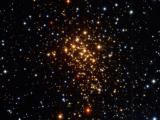
|
25/05/2022
Westerlund 1 cluster: a nursery of giant stars emerging from the darkness The Institute of Astrophysics of Andalusia (IAA-CSIC) participates in the study of the most massive young cluster of stars in the Milky Way. This stellar swarm brings together different types of giant stars in different evolutionary phases, and constitutes a first-class laboratory for the study of the formation and evolution of massive stars |